It’s been five long years since Sony release the PlayStation VR back in 2016, and we are overdue a PlayStation VR 2 to follow it up.
With the PS5 now out worldwide, it’s no surprise that fans are ready for a PSVR 2 headset to go with the new home console. Sony has fortunately confirmed that it is working on a new VR headset – though we don’t know when it might come out, and only have a few concrete details as to what to expect from the new hardware.
In the meantime, the existing PSVR headset still works with the PlayStation 5, though owners have to request a free adapter to connect the camera to the system.
When will PSVR 2 be released?
Sony may have confirmed that it’s working on the PSVR 2 headset, but don’t expect to see it in stores any time before 2022.
In the blog post confirming that work is underway on the headset, Sony’s Hideaki Nishino warned that “There’s still a lot of development underway for our new VR system, so it won’t be launching in 2021.”
Signs do point to a launch next year though. First up, supply chain analyst Ming-Chi Kuo thinks the next-gen PSVR headset will appear in 2022 alongside headsets from Apple and Oculus after allegedly seeing order details for Taiwanese lens manufacturer Yujingguang from the three companies.
While the analyst doesn’t have much of a track record with Sony products, Kuo is usually on the money when it comes to his iPhone leaks, so there could be something to the rumour.
Meanwhile Bloomberg reports that Sony is aiming for a holiday 2022 release window, which would make a lot of sense, citing “people with knowledge of the matter.”
Furthermore, citing a behind-closed-doors developer conference (more on that below) YouTube channel PSVR Without Parole claims that Sony “will reveal their launch details in early 2022,” which if anything suggests the launch might be earlier in the year than the holiday period.
The long wait is no real surprise, coming after comments from PlayStation CEO Jim Ryan. Speaking to The Washington Post ahead of the PS5’s November 2020 launch, Ryan said that “I think we’re more than a few minutes from the future of VR.”
“PlayStation believes in VR. Sony believes in VR, and we definitely believe at some point in the future, VR will represent a meaningful component of interactive entertainment,” he said. “Will it be this year? No. Will it be next year? No. But will it come at some stage? We believe that. And we’re very pleased with all the experience that we’ve gained with PlayStation VR, and we look forward to seeing where that takes us in the future.”
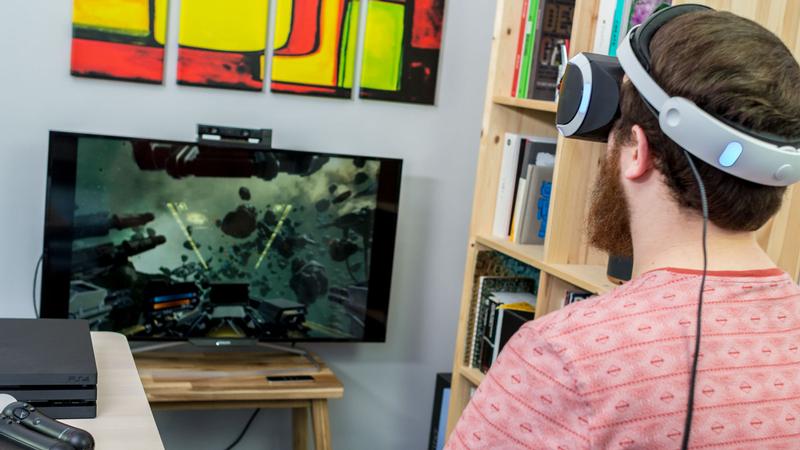
How much will PSVR 2 cost?
The first-gen PlayStation VR starter bundle costs around £259 to buy right now, but that affordable price tag came after a handful of price drops. In fact, the full PlayStation VR kit was priced at £399/$499 at release back in 2016, and we think that’s more representative of the potential cost of the second-gen PlayStation VR headset.
The PlayStation VR 2 is rumoured to sport a lot of new and upgraded tech to improve the overall VR experience for PlayStation gamers (which we go into more detail about below), but of course, the use of high-end tech could bump up the overall price.
For reference, the high-end Vive Cosmos costs £699/$699, although the recent Oculus Quest 2 comes in much cheaper at only £299/$299.
What we’re trying to say is that the price will vary depending on the tech on offer, and for that, we’ll have to wait until Sony officially reveals its next-gen VR headset.
PSVR 2 design and feature rumours
We’ve collated all the biggest design and feature rumours right here, giving you the best look at what PlayStation VR 2 might offer.
Sony itself has confirmed a few features, but given few specifics – though the company promises enhancements to “everything from resolution and field of view to tracking and input.”
It won’t look the same
We don’t know exactly what the PSVR 2 will look like, but our best look at it suggests that it won’t be identical to the first generation.
Spanish site Distrito Metaverso found a patent application filed by Sony in October 2021 that reveals a good look at a possible headset design.
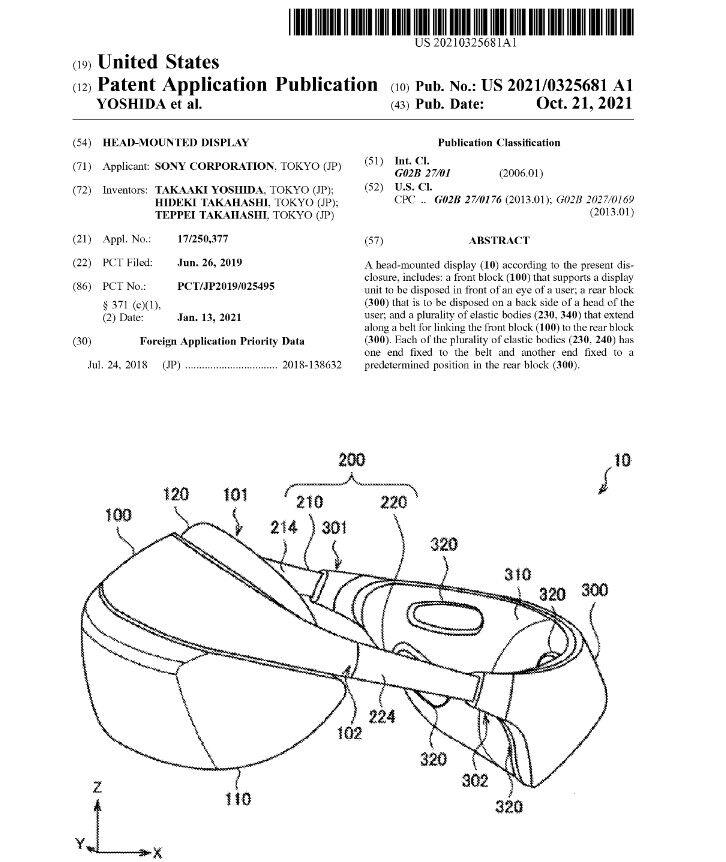
This is described only as a “head-mounted display,” but it certainly looks like a VR headset to us. It also looks like a detailed, near-final design – whereas the older patents seen below use basic headset designs to illustrate specific tech concepts.
This doesn’t reveal too much new about how the headset itself will work, but it looks smaller than its predecessor, and re-balanced to have more weight behind the user’s head and less resting on their face – which certainly sounds more comfortable.
It won’t be wireless
Let’s get the bad news out of the way One of the most anticipated upgrades to the second-gen PSVR is wireless connectivity, but Sony has already debunked that one, confirming on the PlayStation blog that the headset “will connect to PS5 with a single cord to simplify setup and improve ease-of-use, while enabling a high-fidelity visual experience.”
UploadVR cites “multiple sources” in claiming that the cord in question will be a USB-C lead, which makes sense given that Sony placed a single USB-C port pretty prominently on the front of the console.
So far the only VR headsets that are wireless as standard are standalone models like the Oculus Quest 2, which are by their nature less powerful. HTC has released wireless add-ons for the Vive and Vive Cosmos, but doesn’t support wireless play as standard – perhaps Sony will take a similar approach and release a wireless adapter post-launch.
Upgraded PlayStation VR controllers
The current Move controllers do the job, allowing you to interact with virtual environments, but without 1:1 tracking, they simply can’t compete with the experience on offer from Vive, Cosmos or Oculus Touch controllers – and Sony knows it.
Weeks after Sony confirmed that it was working on new controllers for the PSVR 2 headset, the company published a PlayStation Blog post detailing our first proper look at the upcoming controllers, and there’s a huge upgrade on offer.
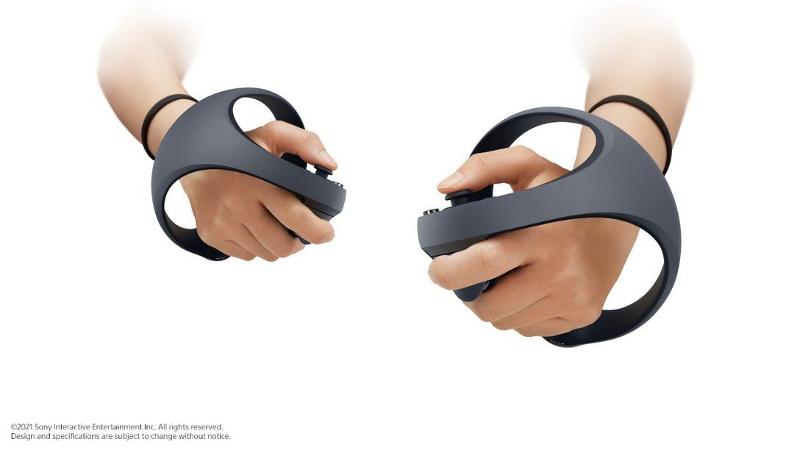
Sporting an orb-like design reminiscent of the Oculus Quest 2 controllers, Sony says that the shape “allows you to hold the controller naturally” with no constraints on how you can move your hands, and the ergonomic design should translate to a more comfortable experience than holding the ageing batons.
The new controllers also sport the adaptive triggers and haptic feedback present on the DualSense controller for PS5, arguably the best features of Sony’s new controller. That’s backed up by finger touch detection, allowing you to make natural gestures in-game, along with the standard plethora of analogue sticks and action buttons.
There aren’t any big in-your-face lights to rely on for tracking this time either, with Sony instead opting for smaller tracking rings that live at the bottom of each controller.
According to PSVR Without Parole’s report on the secret dev conference, the finger touch detection will go one step further: in addition to capacitive touch sensors, the controllers will be able to detect how far away from the sensors your fingers are, and even use that to infer where your other fingers are, generating an idea of the shape of your whole hand without you touching a thing.
The new controllers are a huge step for Sony, and the company teases that there’s still more to come.
There may be built-in headset cameras
Sony has promised improved tracking, and that might be accomplished through a combination of cameras and LEDs within the headset.
According to a patent found by LetsGoDigital, the PlayStation VR 2 headset may have three built-in cameras – two in the front and one in the back – alongside motion detection technology built into the headset itself. The patent also depicts a camera built into all-new Move controllers, but we’ll go more detail about that a little bit later.
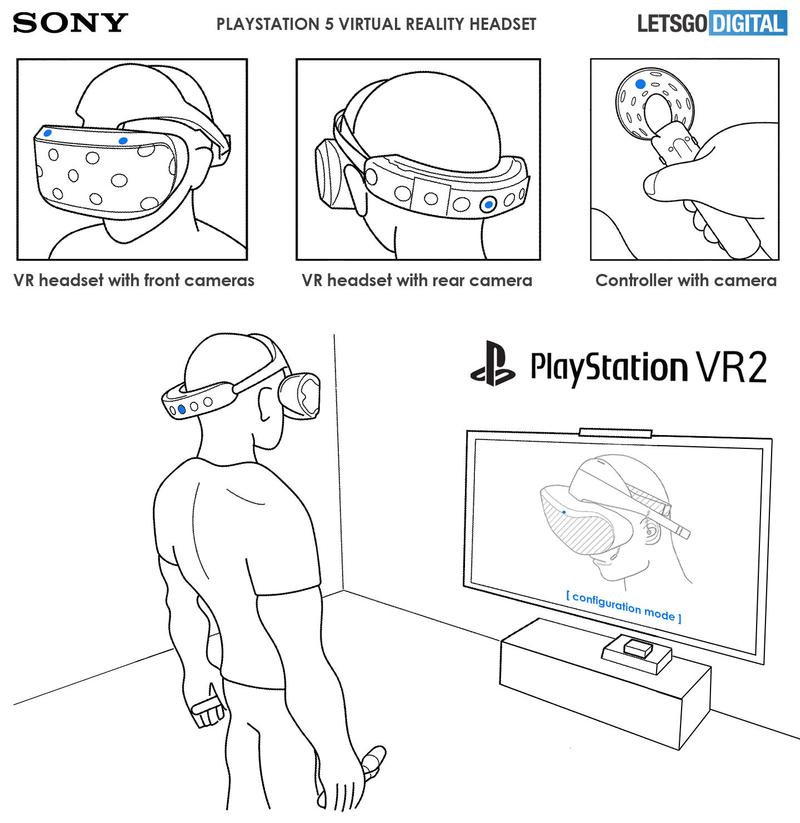
Image via LetsGoDigital
The PSVR 2 headset may also sport numerous LEDs on the back of the headset to help improve movement tracking – one of the biggest issues with the current headset. The LEDs could be tracked via PlayStation Camera, much like the first-gen headset.
Transparency mode
Transparency mode was also detailed in the patent, allowing the headset to display a certain amount of transparency when required – like when getting close to a real-world object – utilising the forward-facing cameras of the headset. It’s a feature of most other major VR headsets, and would certainly be a welcome addition to the PlayStation VR 2.
It might be able to track your eyes
Another patent suggests that the PSVR 2 could also track your eyes. Detailed in a patent that was published back in July 2019, the headset could detect the “posture of the HMD worn on the head” and “determine a user’s gaze direction” to refine what each eye sees and improve stereoscopic depth, also known as parallax imaging.
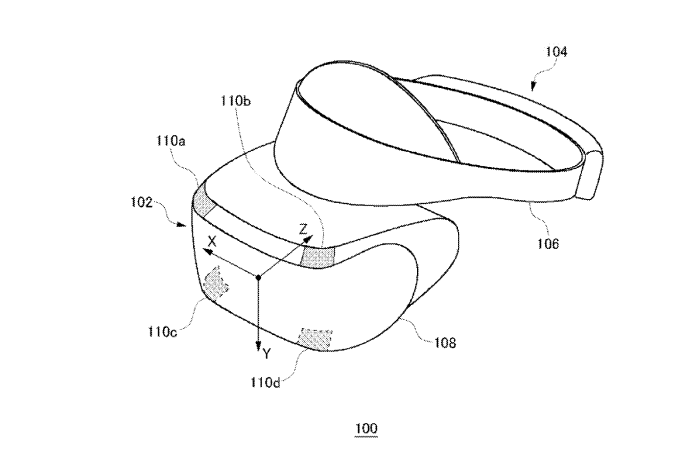
While the uses for the tech beyond improved image quality aren’t mentioned in the patent, it could be used to interact with games simply by looking – a great accessibility option for disabled gamers.
UploadVR has backed up the eye-tracking claim, adding that it will be used to power foveated rendering, a rendering technique that involves reducing image quality in the peripheral vision to allow improved quality in the areas where the player is looking.
PSVR Without Parole echoes that claim, adding that the headset will combine foveated rendering with flexible scaling resolution (FSR), another technique to concentrate rendering power where it will be most noticeable to the player.
Improved display(s)
The PlayStation VR headset currently sports a 5.7in 1920 x 1080 (386ppi) display, which was acceptable in 2016 but not so much in 2022. As we move away from first-gen VR headsets, consumers are demanding higher-res displays to improve the overall look of VR content and make things like reading text in VR more comfortable, and it looks like the PSVR 2 won’t disappoint on that front.
Sony has already confirmed that the next PSVR will have improvements to both resolution and field of view, so we know to expect some sort of improvement here.
Japan Display, otherwise known as JDI, is co-owned by Sony and produces the displays not only for the PSVR headset, but Sony smartphones too. The company has developed a next-gen 3.2in LCD display boasting a 2160 x 2432 resolution and a whopping 1001ppi, which many speculate will be used in the next-gen PSVR headset.
There are reasons to doubt this though. First up, the panel is much smaller than the 5.7in screen in the original PSVR – though Sony could of course use two of them.
Second, the same Bloomberg report that predicts a holiday 2022 release date specifically cites the PSVR 2 as one of the big VR industry holdouts that isn’t using JDI’s LCD tech, and says that the company will in fact use Samsung OLED panels.
The same UploadVR leak cited above suggests the new headset will have a resolution of 4000×2040, with 2000×2040 per eye. It also suggests we should expect a lens separation adjustment dial to help users further refine their display settings.
PSVR Without Parole cites the same figures, adding that the 4K OLED display will also support HDR, and that it will have a field-of-view (FOV) of 110 degrees – among the highest on the market.
Wear sensors and haptic feedback
Another patent discovered by LetsGoDigital hints that Sony is working on both a VR headset and AR/VR glasses that might include new wear and haptic sensors.
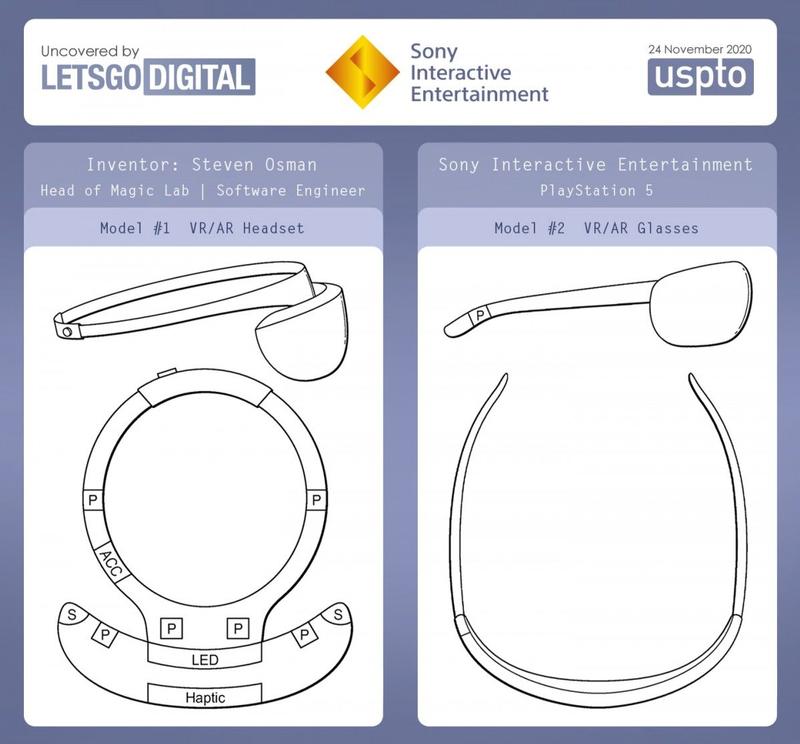
The patent details a headset featuring pressure sensors and accelerometers that can detect when and how the headset is being worn. That could be used as simply as turning the headset on or off as you wear or remove it, but could also be used to help detect if you’re wearing it correctly and give real-time feedback.
Haptics, speakers, and LEDs also feature in the new design as ways to give direct feedback to users while the headset is on. We’ve seen all of those incorporated into the PS5 DualSense controller to great effect, so it makes a lot of sense that Sony might be applying the same tech to the PSVR 2.
Again, UploadVR and PSVR Without Parole’s leaks back at least some of this up, agreeing that there will be motorised haptic feedback built into the headset itself.
Social features
An unusual patent from 2017 was recently dug up by UploadVR, and reveals that Sony was interested in ways to shadow ban players in social VR apps based not only on their language, but also their behaviour and even body language.
The idea is that users making rude gestures could be tracked by the headset’s sensors, and given a ‘safety…
